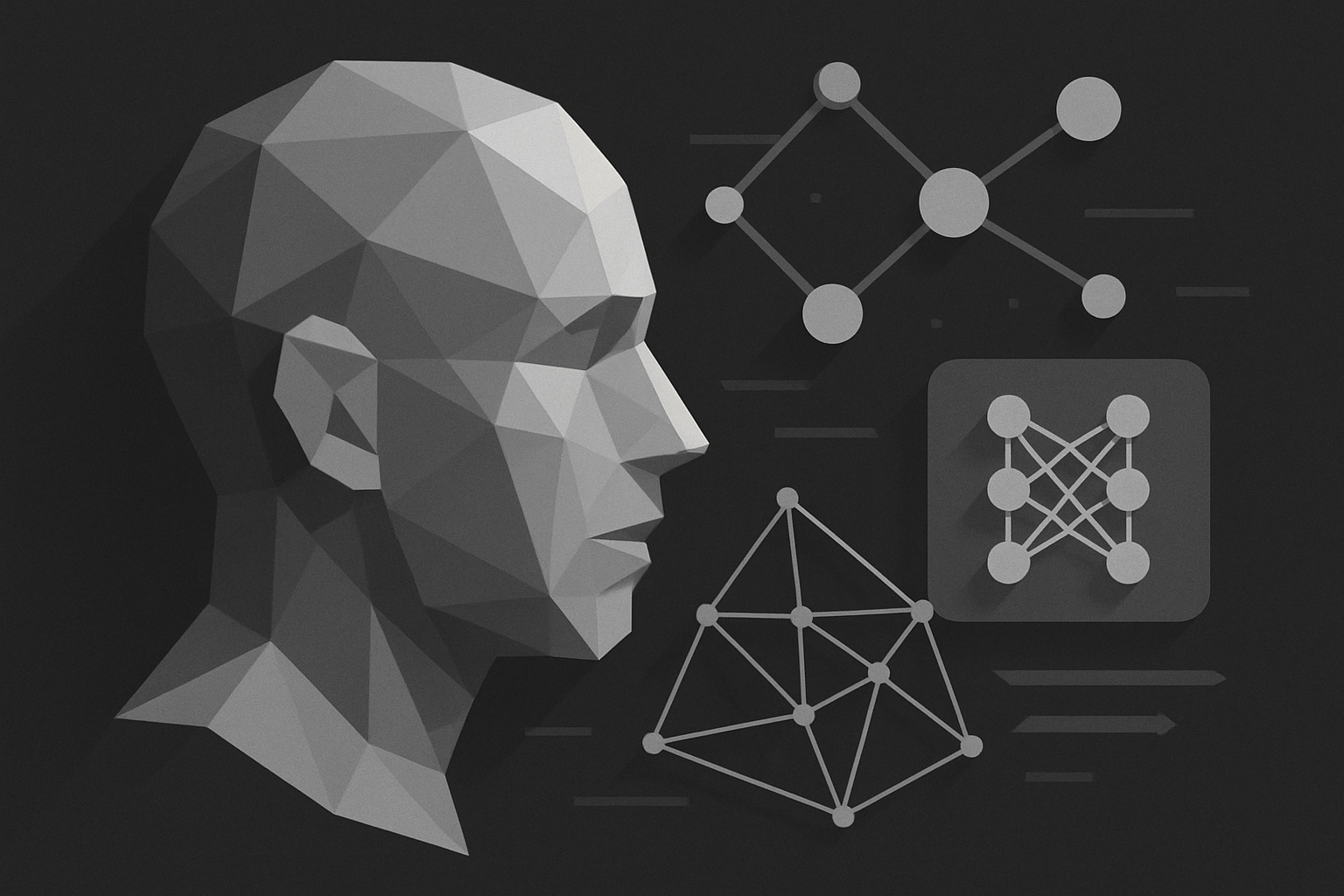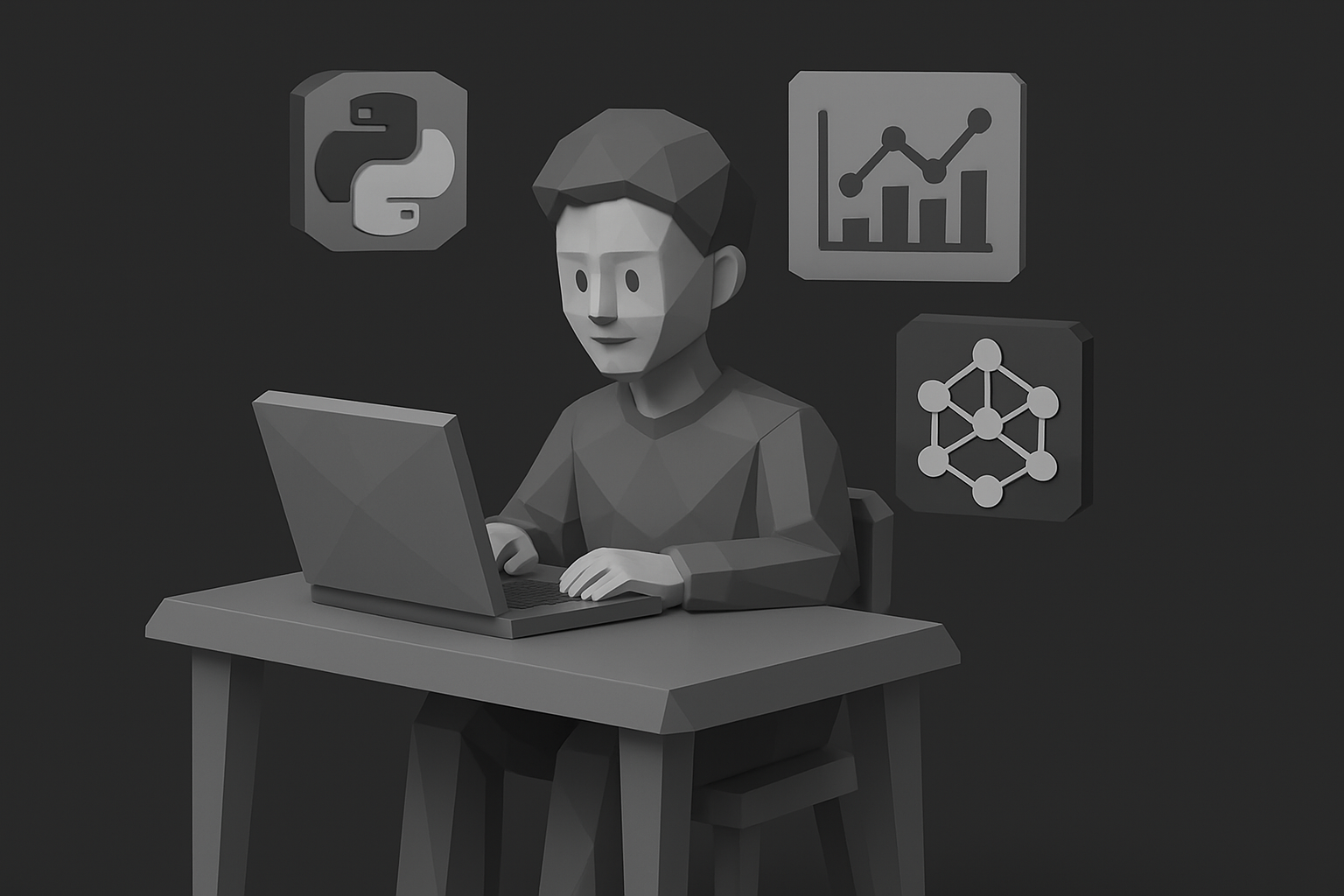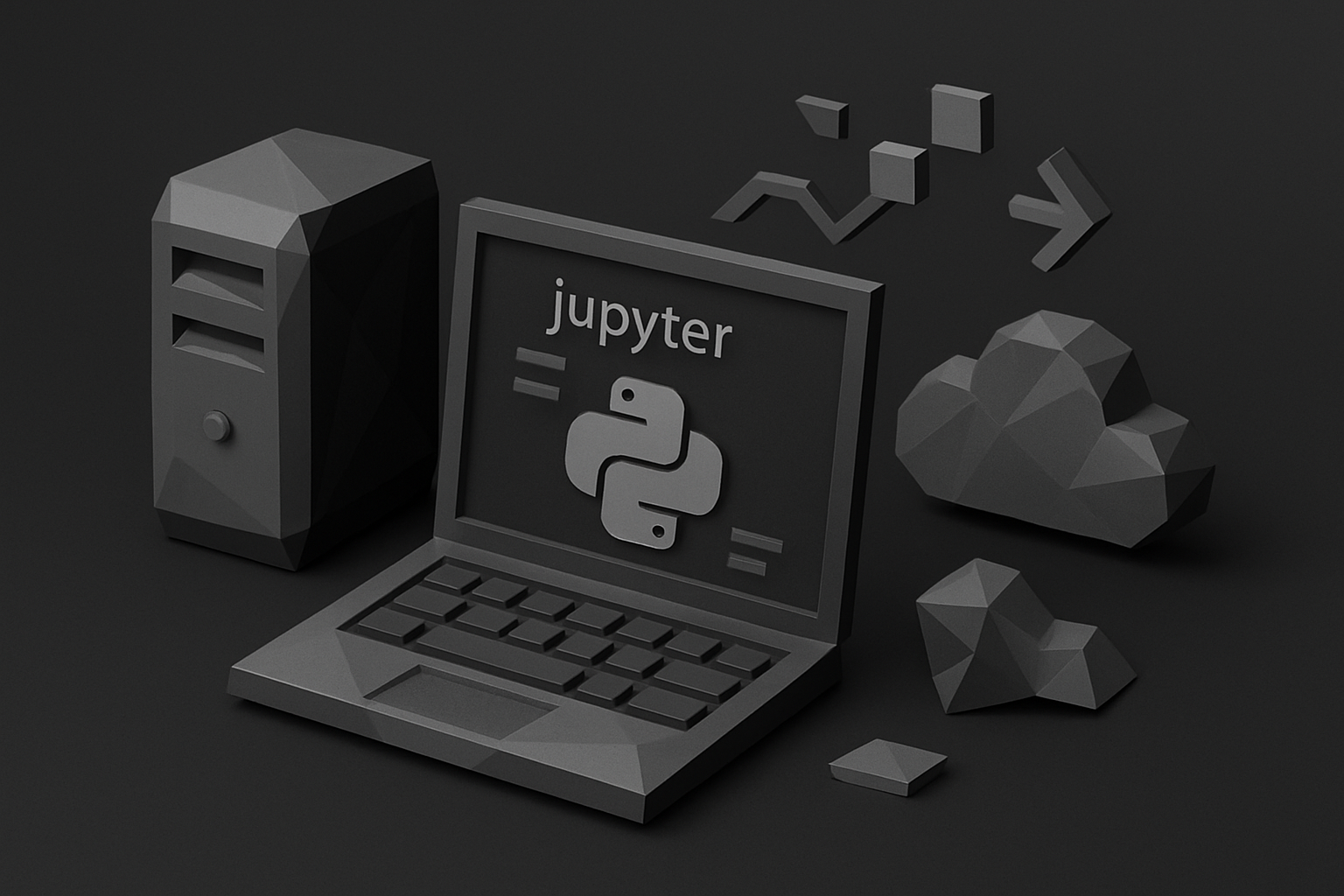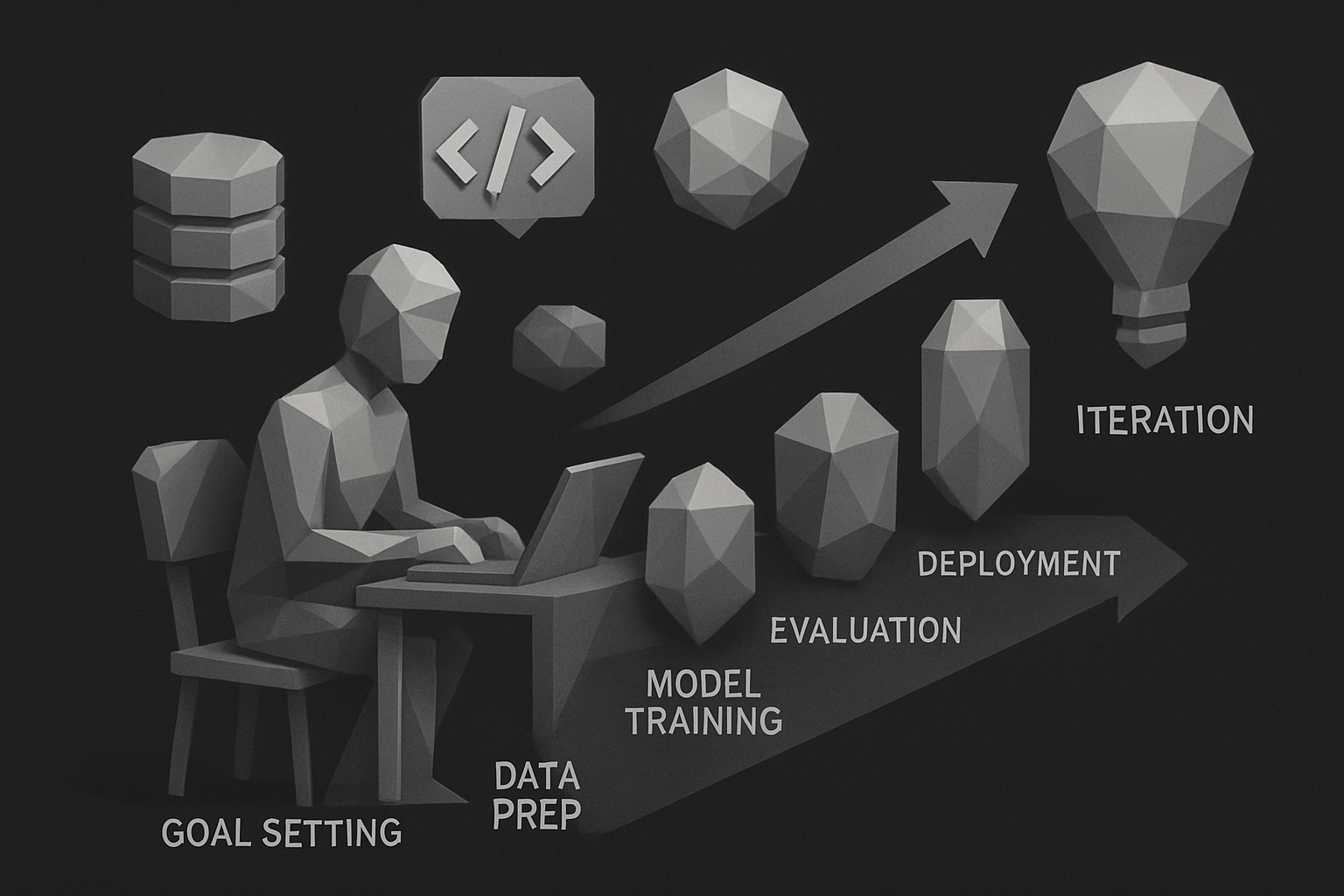Curious about artificial intelligence but unsure where to begin? You’re in good company—2025 is shaping up to be the ideal time to explore basic ai programming and unlock new opportunities.
This beginner-friendly guide is designed to make basic ai programming approachable for everyone, even if you have no prior experience. We’ll break down complex ideas, explain essential skills, and introduce the best tools and languages.
Discover what artificial intelligence really is, the core programming concepts you’ll need, and how to build your first AI project step by step. Along the way, you’ll find practical tips and real-world examples to guide your learning.
Ready to see how basic ai programming can change your future? Let’s dive in together and start your AI journey today.
Understanding Artificial Intelligence: Core Concepts for Beginners
Curious about how basic ai programming fits into the bigger picture? Let’s break down the essentials. Whether you’re completely new or just brushing up, understanding AI’s foundations will set you up for success.

What Is Artificial Intelligence?
Artificial intelligence is the science of teaching computers to perform tasks that usually need human intelligence. It covers subfields like machine learning, deep learning, and natural language processing. You see AI in action every day—think voice assistants that understand speech or streaming services that suggest your next favorite show.
AI is booming. The global AI market is projected to hit $190 billion by 2025, showing just how much it’s shaping our world. Many believe AI is about creating robots that think like people, but that’s a misconception. Most AI today focuses on solving specific tasks, not replacing humans. If you want to see how beginners can approach basic ai programming in real life, check out Coding with artificial intelligence for practical examples.
Why Learn AI Programming in 2025?
AI is transforming industries across the board—healthcare, finance, entertainment, and more. Learning basic ai programming in 2025 puts you at the center of this growth. Companies need people who can build, improve, and manage AI systems.
Demand for AI skills is skyrocketing. LinkedIn reports a 74% annual growth in AI specialist roles, so there’s never been a better time to start. Whether you’re looking for a new career, side hustle, or a way to future-proof your job, basic ai programming opens doors for freelancers, entrepreneurs, and career-changers.
Key AI Terminology and Concepts
Before you dive into basic ai programming, it helps to know a few key terms:
| Term | Meaning |
|---|---|
| Algorithm | Set of rules a computer follows to solve a problem |
| Model | A trained system that makes predictions |
| Dataset | Collection of data used for training/testing |
| Training | Teaching the model using data |
| Inference | Model makes predictions on new data |
You’ll also hear about supervised (labeled data) and unsupervised (unlabeled data) learning. It’s important to recognize issues like bias and ethics—AI systems can reflect human biases if not handled carefully.
How AI Impacts Everyday Life
AI isn’t just for tech giants. It’s in your pocket and your home. Chatbots help with customer service, AI analyzes medical images for doctors, and self-driving cars are hitting the roads.
Let’s look at language translation apps. These use basic ai programming to break down sentences, learn from millions of examples, and provide instant translations. According to Gartner, 77% of devices today use some form of AI, which shows how widespread this technology has become.
The Beginner’s Mindset: Overcoming AI Learning Myths
Many beginners think basic ai programming requires advanced math or years of coding experience. The truth? Anyone can start. Adopting a growth mindset and learning step by step is key.
Plenty of successful AI professionals began without a tech background. They focused on small wins, built confidence, and kept experimenting. By breaking big concepts into manageable pieces, you’ll find basic ai programming more accessible—and even fun.
Essential Programming Skills for AI Beginners
Starting your journey in basic ai programming can feel like learning a new language. The good news? You don’t need to be a genius or a math whiz to get started. With the right skills and tools, anyone can unlock the fundamentals of AI and start building real-world projects.

Choosing the Right Programming Language
Selecting the best language is the foundation of basic ai programming. Python is the top pick because it’s easy to read, has a huge community, and comes loaded with powerful AI libraries. Its clear syntax lets you focus on logic, not just code structure.
Other options include R (great for statistics), Java (used in enterprise environments), and JavaScript (for web-based AI projects). However, Python’s flexibility and resources make it ideal for most beginners.
| Language | Pros | Cons |
|---|---|---|
| Python | Simple, popular | Slower than Java |
| R | Statistical analysis | Less AI library support |
| Java | Scalable, robust | Verbose syntax |
| JavaScript | Web integration | Fewer AI libraries |
For anyone interested in basic ai programming, starting with Python is a smart move.
Core Programming Concepts You Need to Know
Understanding the building blocks of basic ai programming is essential. Key elements include variables (to store data), loops (to repeat actions), functions (to organize code), and data structures like lists and dictionaries.
If you’re new to coding, try writing a simple program in Python:
print("Hello, AI!")
Logic and problem-solving are at the heart of basic ai programming. Practice breaking problems into smaller steps, and you’ll quickly build confidence.
Introduction to Data Handling and Manipulation
Data is the lifeblood of basic ai programming. You’ll work with formats like CSV and JSON, using libraries such as Pandas to load, modify, and explore data.
Here’s how you can load and display a dataset in Python:
import pandas as pd
data = pd.read_csv('data.csv')
print(data.head())
Getting comfortable with data manipulation helps you prepare datasets for AI models. In basic ai programming, mastering these skills sets the stage for more advanced projects.
Fundamentals of Machine Learning
Machine learning is a central pillar of basic ai programming. It involves teaching computers to spot patterns and make decisions using algorithms. There are three main types: supervised learning, unsupervised learning, and reinforcement learning.
Common algorithms include linear regression (predicting numbers), decision trees (making choices), and clustering (grouping data). For example, you can predict house prices with a simple linear regression model.
Understanding these basics will help you see how basic ai programming powers real-world applications.
Working with AI Libraries and Frameworks
Libraries like TensorFlow, PyTorch, and Scikit-learn are essential for basic ai programming. These tools handle the heavy lifting, letting you focus on learning concepts instead of reinventing the wheel.
To get started, install libraries using pip or conda, then build a basic model with Scikit-learn. If you’re looking for more guidance, check out this list of AI tools for coding beginners to explore what’s available and beginner-friendly.
Embracing these libraries will speed up your progress in basic ai programming.
Practical Coding Tips for Beginners
As you dive into basic ai programming, write clean and readable code. Use comments to explain your logic, and organize your files so you can find things later.
Debugging is part of the process. Don’t be afraid to use print statements, error logs, or seek help on platforms like Stack Overflow and GitHub.
Document your work as you go. Good habits now will make your basic ai programming journey smoother and more rewarding.
Setting Up Your AI Programming Environment
Getting started with basic ai programming is easier than ever in 2025. Whether you have a powerful laptop or just a standard computer, you can create, test, and run your first AI projects from home. Let's break down the essential setup steps so you can focus on learning and building.

Hardware and Software Requirements
To kick off your basic ai programming journey, check your system’s specs. Most modern laptops (8GB RAM, i5 processor, 256GB storage) are sufficient. If you want more power, cloud computing is a fantastic option.
Here’s a quick comparison:
| Option | Pros | Cons |
|---|---|---|
| Local Setup | Full control, offline use | Limited by hardware |
| Cloud (Colab, AWS, Azure) | Scalable, free GPU, easy sharing | Needs internet, possible costs |
Cloud platforms like Google Colab offer free GPUs and pre-installed libraries, making them ideal for basic ai programming. Choose what fits your needs and budget.
Installing Python and Key AI Libraries
The next step in basic ai programming is installing Python and the right libraries. Download the latest Python version from the official site. Then, use package managers like pip or conda to install libraries.
To get started, open your terminal and run:
pip install numpy pandas matplotlib scikit-learn
These libraries are essential for data handling, visualization, and building simple models. For more guidance on which languages are trending, check out the AI programming languages to learn in 2025.
Using Jupyter Notebooks for AI Projects
Jupyter Notebooks are a game-changer for basic ai programming. They let you run code, see results instantly, and add notes—all in your browser.
To launch your first notebook, install Jupyter via:
pip install notebook
Then start it with:
jupyter notebook
Try this in your first code cell:
print("Hello, AI World!")
Jupyter's interactive format makes learning basic ai programming more visual and less intimidating.
Version Control and Project Organization
Managing your basic ai programming projects is vital as you progress. Version control tools like Git and GitHub help you track changes and collaborate.
To begin, create a new GitHub repository:
- Sign up at github.com
- Click "New repository"
- Name it (e.g., "my-first-ai-project")
- Follow setup instructions to push your code
Keep your code, data, and documentation organized in folders. Good habits now will make your basic ai programming journey smoother as your projects grow.
Step-by-Step Guide: Building Your First Basic AI Project
Starting your journey with basic ai programming can feel overwhelming, but breaking it into clear steps makes it manageable. Here’s how to go from an idea to a working project, even if you’re brand new to AI.

Step 1: Defining Your AI Project Goal
Every basic ai programming project starts with a clear, simple goal. Choose something achievable, like sorting emails into spam and non-spam categories. This helps you focus your learning and keeps frustration low.
Begin by writing down your objective. For example, “Can my program distinguish spam from non-spam emails?” Set criteria for success, such as achieving 80% accuracy on your test data.
A defined goal gives your project direction. It also makes it easier to measure progress and celebrate small wins, which is essential for motivation.
Step 2: Collecting and Preparing Your Data
Once your goal is set, the next step in basic ai programming is gathering quality data. Open datasets are available on platforms like Kaggle and the UCI Machine Learning Repository. Look for data relevant to your project, such as a labeled email dataset for spam detection.
Data preparation is crucial. Clean your data by removing duplicates, handling missing values, and ensuring consistent formatting. This step prevents errors later and leads to better model performance.
A simple example: use Python's pandas library to load and inspect your dataset, then drop any rows with missing information.
Step 3: Selecting and Training a Model
With clean data, you’re ready for the heart of basic ai programming: choosing and training a model. For beginners, start with straightforward algorithms like logistic regression or decision trees, which work well for classification problems.
Split your data into training and test sets, usually in a 70/30 ratio. This helps you evaluate your model’s performance on unseen data.
In Python, you might use scikit-learn’s LogisticRegression class to train your model. This step is where your program starts making predictions based on patterns in your data.
Step 4: Evaluating Your Model’s Performance
Evaluation is a key part of basic ai programming. You need to know how well your model is doing. Common metrics include accuracy, precision, recall, and the F1 score.
Visualizing your results can help spot strengths and weaknesses. For example, a confusion matrix shows where your model gets things right or wrong.
If your spam classifier labels most emails correctly but misses some spam, you might need to tweak your approach. Understanding these metrics guides your next steps.
Step 5: Improving and Tuning Your Model
Improvement is ongoing in basic ai programming. Once you’ve evaluated your model, look for ways to boost its performance. Techniques like hyperparameter tuning and cross-validation help you find the best settings for your algorithm.
Watch out for overfitting, where your model memorizes training data instead of learning general patterns. Adjust parameters or try different algorithms if this happens.
Small changes can make a big difference. Experiment, compare results, and track what works best for your project.
Step 6: Deploying and Sharing Your AI Project
Deploying your project is where basic ai programming becomes real and rewarding. Turn your model into a simple app using tools like Streamlit or Flask. This lets others interact with your creation.
Sharing your project on GitHub or a personal website shows your skills to potential employers and collaborators. According to High-income tech skills to learn, showcasing hands-on AI projects can open doors to lucrative opportunities in tech.
Document your work clearly, including instructions and code comments. This makes your project more valuable to others—and to your future self.
Step 7: Learning from Mistakes and Iterating
Mistakes are part of the process in basic ai programming. Review errors and unexpected results to find learning opportunities. Did your model misclassify certain types of emails? Dig into why.
Seek feedback from online communities, such as AI forums or Stack Overflow. Sharing your code and asking questions accelerates your learning.
Iteration is key. Each round of improvement brings you closer to a polished, effective AI solution.
Resources for Further Project Ideas
After completing your first basic ai programming project, keep experimenting. Try projects like image recognition, sentiment analysis, or building a simple recommendation engine.
Find inspiration on GitHub, AI blogs, or online course platforms. Many communities share open-source projects and tutorials for beginners.
Stay curious and keep building. Every new project strengthens your skills and confidence in basic ai programming.
Common Challenges and How to Overcome Them in AI Programming
Getting started with basic ai programming can feel overwhelming, but every beginner faces similar hurdles. Let’s break down the most common challenges and how you can overcome them with confidence.
Tackling the Learning Curve
The learning curve in basic ai programming can seem steep, especially if you’re new to coding or AI concepts. The key is to break complex topics into smaller, manageable pieces. Many learners benefit from structured online courses or tutorials that guide you step-by-step.
A growth mindset is crucial. Embracing mistakes as learning opportunities will keep you moving forward. For actionable strategies, check out this guide on growth mindset for learning AI. Remember, even seasoned programmers started as beginners—incremental progress adds up quickly.
- Start with simple projects
- Set realistic goals
- Celebrate small wins
Stay patient and persistent; your confidence and skills will grow with each new challenge.
Debugging and Troubleshooting AI Code
Debugging is a core skill in basic ai programming. Beginners often encounter syntax errors, data mismatches, or unexpected results. Don’t let these issues discourage you; every coder faces them.
Effective debugging starts with clear, readable code. Use print statements to check variable values and review error logs carefully. Online communities like Stack Overflow can help you troubleshoot tough problems.
Common debugging steps:
- Isolate the problem line or block
- Check data types and shapes
- Consult documentation or forums
With practice, you’ll become more efficient at identifying and fixing issues, making your AI projects smoother and more rewarding.
Understanding and Preventing Bias in AI Models
Bias is a significant challenge in basic ai programming. AI models can unintentionally learn and amplify patterns that are unfair or inaccurate, especially if the data used is biased.
To identify bias, examine your dataset’s sources and representation. Use techniques like data balancing and regular evaluation to minimize unintended outcomes. Always consider the ethical implications of your work.
Best practices include:
- Testing models on diverse data
- Documenting decisions and assumptions
- Seeking feedback from others
By being mindful of bias, you ensure your AI solutions are fair, accurate, and trustworthy.
Staying Motivated and Tracking Progress
Maintaining motivation is essential for long-term success in basic ai programming. Set achievable milestones and track your progress to stay focused. Joining online communities or study groups provides support and accountability.
Participating in AI challenges, hackathons, or open-source projects can keep learning exciting. Remember to reflect on your accomplishments—every small step is progress.
Tips for staying motivated:
- Share your work with others
- Celebrate completed tasks
- Learn from setbacks
Stay curious and connected; your journey in AI will be filled with growth and opportunity.
The Future of AI Programming: Trends and Opportunities for Beginners
Curious about where basic ai programming is heading? The future is brighter than ever for newcomers. As we look ahead to 2025, rapid changes in technology, career opportunities, and learning resources are reshaping how beginners break into the AI field. Let’s explore the top trends and how you can ride the wave.
Emerging AI Technologies in 2025
The landscape of basic ai programming is changing fast. In 2025, we’re seeing the rise of generative AI, edge AI, and explainable AI. Generative AI, behind tools like ChatGPT and AI art generators, is expected to reach a $60 billion market. Edge AI brings intelligence to devices like smartphones and IoT gadgets, making real-time decisions possible.
Explainable AI is also gaining traction, helping users understand how models make decisions. For a deep dive into these trends and comprehensive data, check out the Artificial Intelligence Index Report 2025.
Career Paths and Opportunities in AI
There’s never been a better time to start with basic ai programming. Entry-level roles include AI programmer, data analyst, and machine learning engineer. Freelancing and entrepreneurship are also booming, with entry salaries averaging $95,000 per year.
Here’s a quick comparison:
| Role | Average Salary | Common Skills |
|---|---|---|
| AI Programmer | $95,000 | Python, ML libraries |
| Data Analyst | $80,000 | Data visualization |
| ML Engineer | $105,000 | Model deployment |
AI is transforming the workforce, as highlighted in AI's impact on the IT industry in 2025. Whether you’re switching careers or starting fresh, opportunities are growing.
Learning Resources and Communities to Join
Staying up-to-date in basic ai programming means connecting with the right learning platforms and communities. Top online courses include Coursera, Udacity, and edX, offering beginner-friendly content.
Online forums like Reddit r/MachineLearning and AI Stack Exchange are great for asking questions and networking. Joining these spaces keeps you motivated and exposes you to real-world challenges and solutions.
- Coursera: Structured courses
- Udacity: Project-based learning
- Reddit r/MachineLearning: Active discussions
- AI Stack Exchange: Expert Q&A
Learning together accelerates your progress.
Building a Portfolio and Showcasing Your Skills
A strong portfolio is essential for anyone starting with basic ai programming. Create GitHub repositories to document your projects. Build a simple website to showcase your work and explain your process.
Participate in open-source projects to gain experience and visibility. For example, contribute to a recommendation engine or image classifier. Remember, employers love seeing practical, well-documented projects.
Tips:
- Keep your code clean and commented
- Write project READMEs
- Share results and lessons learned
Ethical Considerations and Responsible AI
As you advance in basic ai programming, ethics must be front and center. Focus on transparency and fairness in your models. Address data privacy by anonymizing sensitive information and following established guidelines.
Responsible AI means thinking about the impact of your code on society. Stay updated on industry standards and always test for bias in your datasets. Ethical programming builds trust in your work.
Staying Ahead: How to Keep Your AI Skills Relevant
AI evolves rapidly, so continuous learning is key in basic ai programming. Follow AI news through newsletters and journals. Attend webinars and conferences to hear from industry leaders.
Participate in hackathons and workshops to practice your skills and stay sharp. Subscribing to trusted sources ensures you never miss important updates or breakthroughs.
Stay curious, keep building, and you’ll always be ahead of the curve.
You’ve made it to the end of this beginner’s guide—so what’s next? If you’re excited to put these new AI programming concepts into action and want to stop trading your time for money, now’s the perfect moment to take the first step toward building your digital product business. At CreateSell, you’ll find the support, resources, and practical advice you need to turn your knowledge into real products, grow your audience, and automate your sales. Let’s start this journey together—your future in AI and digital entrepreneurship is just one click away.
Get Started